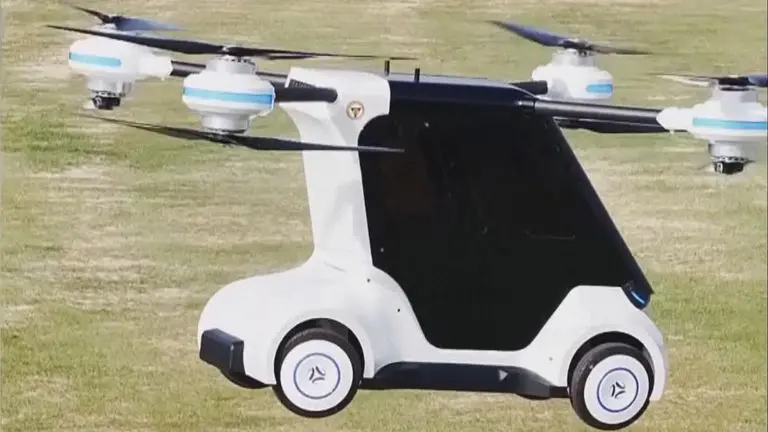Making a car fly is an obsession that keeps filmmakers awake at night. Just take Luc Besson with his “The Fifth Element.”
Footage of cars soaring over the city may soon become a reality. Another significant step towards this has been taken by the Chinese smart car manufacturer XPeng.
Its subsidiary is – XPreng AeroHT – created an advanced version of a fully electric flying car with vertical takeoff and landing (eVTOL). It resembles a regular car with a drone quadcopter on the roof.
After successful tests, the developers showcased the electric vehicle at the special event XPreng 1024 Tech Day in Guangzhou. They also shared their achievements online with drivers who dream of innovative ways to overcome traffic jams.
As reported by the XРeng AeroHT team on their website, in driving mode, the vehicle can be compared to any other car, particularly in terms of functionality and size. In flight mode, the electric vehicle is controlled using the steering wheel and the right gear shift lever. With these controls, the flycar can move forward and backward, turn, take off, hover, and land. For added safety and reliability, the electric car is equipped with two backup engines.
The multirotor configuration has sparked perhaps the greatest interest among potential users. It seems that four propellers lift the vehicle into the sky like a feather. One of the secrets behind this impression lies in the use of lightweight materials by manufacturers.
The Xpeng AeroHT team has equipped the innovative model with a convenient rotor folding system. When the electric car is driving on the roads, the propellers remain folded. If the driver wishes to fly, they can press a button, and the propellers will extend again.
Currently, developers are exploring the possibilities of using artificial intelligence in flying cars, particularly the installation of robotic systems in flying vehicles.
The next challenge for design engineers is to elevate flight safety and the use of advanced technologies to an even higher level.
The company believes that the traffic management system needs further modernization. It should better adapt to challenging terrain conditions, such as stairs, steep slopes, and gravel roads.


